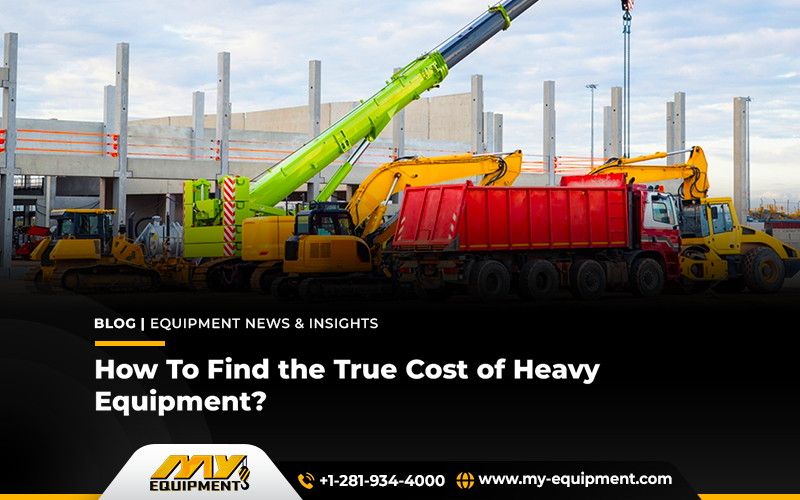Automobiles and heavy equipment continue to eat up a significant portion of most contractors’ profit and loss statements. Construction equipment, like personnel and supplies, has seen its price tag affected by inflation and ongoing issues in the supply chain.
According to the Marcum National Construction Survey for 2023, 37% of construction companies are considering delaying equipment purchases due to concerns about loan rates. Not only are new equipment purchases fraught with sticker shock and lengthy wait times, but secondhand equipment costs are soaring and availability is problematic, to say the least.
Just looking at the purchase price isn’t enough to calculate the real cost of an item of equipment and its impact on the business. There are many other factors to consider as well. For accurate cash flow projections and operational budgeting in subsequent years, it is crucial to know how to determine the entire price for each piece of heavy equipment.
There are a lot of variables beyond the purchase price that go into determining the real price of a piece of heavy equipment and its influence on the company.
Understanding how to calculate the total cost of every piece of heavy machinery for sale is essential for precise cash flow forecasts and practical budgeting in the years to come.
Knowing The Ownership Costs
The original investment and ongoing maintenance of a piece of equipment are the two main components that make up its ownership costs. The majority of ownership expenses are easy to see, but occasionally you could miss those that aren’t on the invoice of sale.
The following are examples of typical ownership expenses:
- Cost of acquisition
- Municipal and state sales taxes
- Payment processing fees
Adding GPS systems, attachments, corporate paint and branding, etc., to the equipment is another way to make it operational.
These are the expenses that come with acquiring the equipment. The initial cost of equipment ownership doesn’t always factor in additional expenses associated with it.
- Health insurance premiums
- Expenditures for real estate each year
- Cost of an extended warranty
Evaluating The Operating Costs
The true cost of an item of machinery includes not only the purchase price but also its operating expenses. Some examples of these are:
Operating expenses (hourly salary, perks, equivalent contributions, union dues, employer payroll taxes, etc.)
The expense of fuel, including both the price per gallon and the quantity consumed per hour of operation.
Include daily, weekly, monthly, and yearly repairs in routine maintenance expenditures, encompassing both internal and external expenses.
- Price of lubrication
- Large sums for repairs
- Storage and transportation expenses
- Oil, fluids, worn parts, and other consumables used throughout the year
How To Estimate Heavy Equipment Price As A Contractor?
Once the contractor knows the equipment’s ownership and running costs, they may estimate the true cost to use it by answering a few more questions.
Here are the questions:
- How many years does the company’s equipment typically last?
- What is the expected annual usage time for the equipment?
- How much will the machinery be worth when it has served its purpose for the business?
With this data in hand, a contractor may determine the “rate” for operating a piece of heavy equipment and utilize it for things like project costing, forecasting, and bidding.
From a financial and planning perspective, it is better to regard each piece of heavy equipment as an employee when considering equipment utilization reports. Consider equipment similarly to employees, who allocate into contracts at a regular hourly rate, to collect all costs.
The Bottom Line
When trying to get a better grasp on how much equipment costs, it’s important to keep in mind the things mentioned above, which provide an executive summary of some typical ownership and running costs.
The type of equipment and its intended application, however, will have a significant impact on these expenses. Always take inflation into account at all times.
A heavy equipment business should, at the very least, budget for and anticipate increases in the prices of labor, fuel, and attachments during the equipment’s useful life.


 1400 Broadfield Blvd, Houston, TX 77084,
USA.
1400 Broadfield Blvd, Houston, TX 77084,
USA. omer@my-equipment.com
omer@my-equipment.com